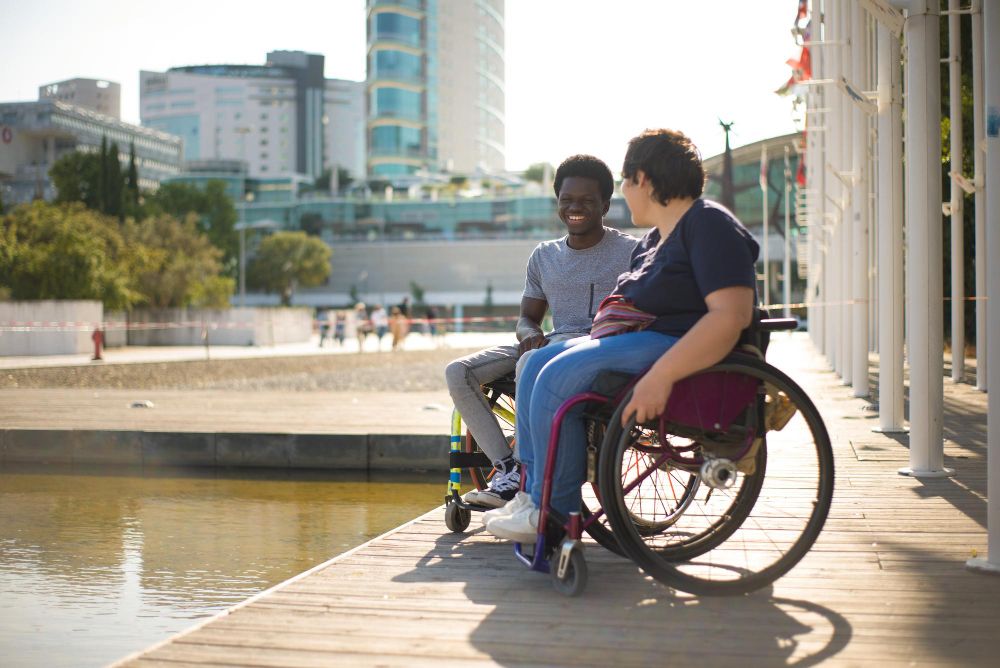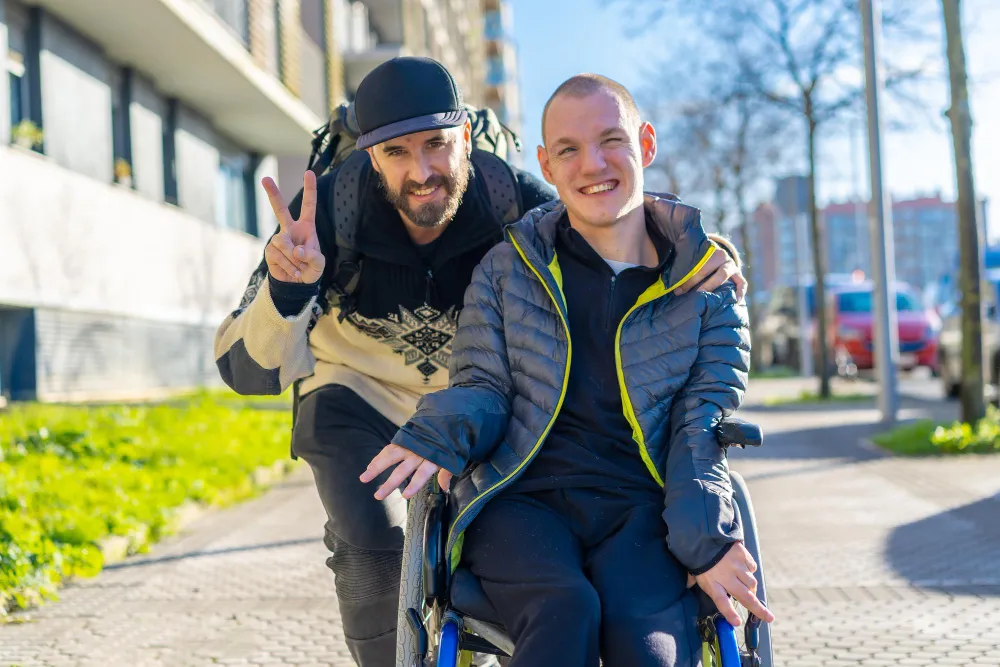NDIS Capacity Building supports are designed to help you build skills for long-term independence, confidence, and community participation. Unlike day-to-day services that help you manage current needs, Capacity Building focuses on progress. It’s about learning how to do more for yourself, connect with others, and work towards goals that matter to you.
Whether you’re working on social skills, improving your health, finding a job, or learning how to manage your own NDIS plan, Capacity Building funding can support you through services like therapy, support coordination, and training. The type of funding you receive depends on the goals in your plan—and how clearly they link to your personal development.
What Is Capacity Building?
Capacity Building is a type of NDIS support that helps you develop new skills, improve your independence, and reach your long-term goals. It’s different from the support you might use every day—this funding is meant to create lasting change in how you live, work, learn, and connect with others.
The NDIS includes Capacity Building in your plan when you have clear goals that involve growing your abilities or improving your quality of life. For example, if your goal is to manage your money more confidently, you might receive Capacity Building funding for support to learn budgeting skills. If you want to join community activities or make new friends, your plan might include social skills programs.
You can only use Capacity Building funding for the purpose it was approved for. It’s goal-specific, which means it is linked to one or more goals in your NDIS plan—like finding a job, improving communication, or building stronger relationships.
Services delivered under Capacity Building might include:
- Occupational therapy to build daily living skills
- Speech therapy to improve communication
- Support coordination to help you manage your services
- Exercise physiology to improve your physical health
- Life skills training to help you travel independently or prepare meals
Capacity Building gives you the tools to become more confident and self-reliant over time. It’s about helping you take real steps forward, with the right support behind you.
Related: NDIS Funding for Autism: What You Need to Know
How Capacity Building Differs from Core and Capital Supports

The NDIS offers three main types of funding: Core, Capital, and Capacity Building. Each one covers different parts of your support needs. Understanding the difference helps you make the most of your plan and use the right funding for the right service.
Core supports are for everyday needs. This might include help with personal care, transport to appointments, or support workers who assist with meals or cleaning. These services help you live your day-to-day life safely and comfortably.
Capital supports are for physical items or technology. If you need a wheelchair, home modifications, or assistive devices like communication tools, this funding helps pay for those things. It’s usually used for one-off purchases or upgrades.
Capacity Building supports, on the other hand, are for personal development. This funding is about building your skills, knowledge, and confidence. While Core and Capital supports help you with what’s needed now, Capacity Building is focused on what you want to achieve in the future—like improving your communication, getting ready for work, or learning how to manage your own supports.
Here’s a simple comparison:
| Type of Support | What It Covers | Purpose |
|---|---|---|
| Core | Daily support services (e.g. personal care) | Helps with daily tasks |
| Capital | Equipment, technology, home modifications | Provides physical assets |
| Capacity Building | Skill development, therapy, support coordination | Helps you grow and progress |
Each funding type plays a different role in your plan. Capacity Building is the part that helps you take charge of your future.
List of Capacity Building Support Categories
Capacity Building funding is divided into specific categories, each linked to a different area of personal development. Your plan may include one or more of these categories depending on your goals. Each one supports a different aspect of your life—from learning new skills to building healthier routines or improving your living situation.
Here’s a breakdown of the Capacity Building support categories and what each one can help with:
Support Coordination
This category helps you manage your NDIS plan and services more effectively.
- Understand your plan
- Find and connect with providers
- Organise service agreements
- Adjust your supports as needed
Improved Living Arrangements
Supports you to find and maintain safe, appropriate housing.
- Explore rental or shared housing options
- Understand tenancy agreements
- Learn how to live more independently
Increased Social and Community Participation
Encourages involvement in the community through structured programs and personal development.
- Join group activities or workshops
- Build confidence in social settings
- Learn new skills in a supportive environment
Finding and Keeping a Job
Also called School Leaver Employment Supports (SLES) or Disability Employment Services (DES).
- Prepare for work with training and mentoring
- Learn how to write a resume and attend interviews
- Receive workplace support to stay in a job
Improved Relationships
Designed to help you develop and maintain healthy, safe relationships.
- Access behavioural therapy
- Build emotional regulation skills
- Get support with communication and conflict resolution
Improved Health and Wellbeing
Focuses on physical and mental health through professional services.
- Work with a dietitian for nutrition advice
- Build strength and fitness with an exercise physiologist
- Improve mental wellbeing through counselling or allied health
Improved Learning
Supports education goals, especially if you’re transitioning from school or starting further study.
- Enrol in courses or training programs
- Get support with learning strategies
- Improve academic and vocational skills
Improved Life Choices (Plan Management)
Covers the cost of having a professional manage your funding.
- Pay providers on your behalf
- Track your NDIS budget
- Get more flexibility in choosing services
Improved Daily Living
Funds therapies that build essential life skills and promote independence.
- Occupational therapy for daily tasks
- Speech therapy for communication
- Psychology for emotional wellbeing
- Physiotherapy for mobility and physical health
Each category is designed to help you progress in a meaningful way. When your plan includes clear goals, these supports give you the opportunity to grow where it matters most.
Related: Who Is Eligible for NDIS Respite Care?
Who Can Access Capacity Building Supports?
Capacity Building supports are available to NDIS participants whose goals involve improving skills, increasing independence, or building long-term capacity. These supports are not automatically included in every plan—they’re added based on what you want to work toward and the evidence provided during your planning meeting.
Anyone can access Capacity Building funding if their goals require it and if they provide the right information to support those goals. It doesn’t matter what age you are or what type of disability you have—the key is whether your plan includes goals that relate to skill development, community involvement, employment, health, or learning.
To access Capacity Building supports, you need to:
- Be a current NDIS participant
- Set specific goals in your NDIS plan that require skill development or therapy
- Work with your Local Area Coordinator (LAC), Early Childhood Partner, or planner to explain how these supports will help you achieve your goals
- Provide professional evidence—such as reports from therapists, teachers, or doctors—that supports the need for Capacity Building services
Some examples of when you might be eligible for Capacity Building:
- You want to improve communication skills through speech therapy
- You need support to build daily routines or life skills
- You’re preparing for work or further education
- You want to make friends and join local groups
- You need help to manage your NDIS plan and connect with services
The supports you receive will match the goals written into your plan. If your needs or priorities change, your Capacity Building supports can also change at your next plan reassessment. The more clearly your goals are written, the more likely it is that Capacity Building funding will be included in your plan.
Related: NDIS Support for People with Down Syndrome: What You Need to Know
How to Make the Most of Capacity Building Funds

Getting Capacity Building funding in your NDIS plan is a great opportunity—but how you use it matters just as much as having it. The funding is there to help you build long-term skills, so it’s important to be intentional, organised, and active in how you use your supports.
Start by knowing exactly what categories are included in your plan. Each one is linked to a goal—so your first step is to understand what that goal is and how the funding can help you work toward it.
Here’s how you can get the most value from your Capacity Building supports:
- Use your funding for services that match the goals in your plan
- Choose providers who are experienced, reliable, and clear about what they offer
- Keep track of your progress with each service
- Communicate openly with your providers about what’s working and what isn’t
- Ask for written progress updates from therapists or support workers so you can use them in your next plan review
- Don’t leave appointments until the end of your plan period—use your hours steadily over time
- If you have Support Coordination in your plan, work closely with your coordinator to stay organised and make informed decisions
It also helps to set clear expectations with your providers. Let them know what you want to achieve and how you prefer to work. Whether you’re learning how to budget, building social skills, or working with a therapist, every session should bring you closer to a practical skill or goal.
Finally, reflect on your progress every few months. If you’re learning new skills, write them down. If you’re participating more in your community, take note of it. These real-life outcomes show the NDIS that your Capacity Building supports are working—and make it easier to keep or increase your funding in future plans.
Related: What Is Respite? A Guide for NDIS Participants and Families
How to Request Capacity Building in Your NDIS Plan
Capacity Building supports are only included in your NDIS plan if your goals and supporting evidence clearly show a need for them. To get these supports approved, you need to be prepared for your planning meeting and explain what you want to achieve, why it matters, and what support will help you get there.
Start by thinking about your long-term goals. These might include becoming more independent at home, improving communication, joining a social group, finding a job, or managing your own services. Once you know what you want, link that goal to a support category—like therapy, skill-building, or support coordination.
To request Capacity Building supports, you should:
- Write clear, realistic goals before your planning or review meeting
- Explain how each goal will help you gain independence or participate more in life
- Ask your current providers (like therapists or support workers) for written reports that show why these supports are needed
- Be specific—mention what kind of support you’re asking for and how often you’ll need it
- Use examples from your life to show where you need support and what kind of progress you’re working toward
If you’re working with a Support Coordinator or an advocate, they can also help you prepare for your planning meeting. They may suggest ways to present your goals more clearly or help gather the right evidence.
During your meeting, your Local Area Coordinator (LAC) or planner will review your goals, your support needs, and any documents you’ve provided. The more clearly you can link your goals to real outcomes, the more likely it is your plan will include the right Capacity Building categories.
After your plan is approved, take time to read it carefully. Check which categories are included, how much funding is available, and whether you need to book appointments straight away. Getting Capacity Building supports into your plan is just the first step—knowing how to use them well comes next.
Final Thoughts
NDIS Capacity Building supports are designed to do more than meet your current needs—they’re about helping you grow, learn, and take more control of your life over time. Whether you’re building confidence in daily routines, preparing for work, improving your health, or learning how to manage your own plan, Capacity Building services give you the tools to make real progress.
Unlike Core supports, which help with everyday tasks, Capacity Building is focused on development. Each category is tied to a long-term goal, and every service is aimed at helping you become more independent, connected, or skilled. When used well, this funding can create lasting change—both in how you live and how you see your potential.
To get the most out of your plan, it helps to be clear about your goals, track your progress, and work closely with providers who understand what you’re aiming for. Think of each support as a stepping stone—whether it’s one-on-one therapy, a life skills program, or help with managing your services, every part of Capacity Building is there to help you move forward.
If you’re reviewing your plan or preparing for your first one, take time to explore what’s possible with Capacity Building. The more you understand how it works, the more effectively you can use it to build a life that reflects your strengths, goals, and choices.
